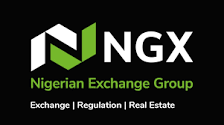The International Union of Marine Insurance (IUMI) has reported on the marine insurance market that global marine premiums were $28.5 billion in 2017, up by two percent from the recorded value in 2016.
However, the IUMI noted that despite this increase, there was an increasing mismatch between income levels and covered risk when current premium levels are viewed in relation to covered risks and the impact of claims.
The global body reported that in the hull market, falling vessel values had, among other market conditions, contributed to an erosion of income to a degree where income is now not sufficient to allow for normal repair costs in a given year.
This is even as it disclosed that the last 10 years’ statistics reflected an increasing volatility in the impact of claims on underwriting results caused by the random occurrence of claims with unprecedented cost.
As vessel sizes continue to increase, this trend will not reverse, says the IUMI, and the heightened risk must be taken into account. The shipping and insurance industries will have to embrace this level of volatility and uncertainty which may impact future profitability.
The offshore energy market has also seen a substantial erosion of premium income caused by the low oil price and the consequent low activity in the offshore sector.
According to the IUMI, the distribution of the $28.5 billion global income between geographic regions remained stable, with only a one percent increase in the share of Asia and Latin America as compared with Europe.
In addition, it reported that in the year under review, Europe represented 49 percent of the global income, Asia/Pacific 29 percent, Latin America 10 percent, North America six percent, Middle East four percent and Africa 2.4 percent.
The report indicated that for global marine premiums by line of business, cargo continued to represent the largest share with 57 percent in 2017, hull 24 percent, offshore energy 12 percent and marine liability (other than P&I) seven percent.
A further analysis of the IUMI report showed that premium income for marine cargo insurance was estimated at $16.1 billion for 2017, representing a six percent increase on the 2016 result, and that cargo was the only line with an actual increase in volume and, consequently, its relative share of the overall global premium.
It attributed the increase in absolute numbers to an upswing in trade in combination with exchange rate fluctuations (which affect cargo premiums more strongly than other sectors).
The report stated that 2014-2016 showed an extraordinary increase in loss ratios, primarily caused by the impact of outlier and national catastrophe (nat-cat) losses.
IUMI stated that when analyised in the context of increasing accumulation exposure and climate change, that this might indicate a “new normal”, noting that 2017 continues this recent trend and is expected to be affected more than average due to a number of nat-cat events including hurricanes, the Mexican earthquake, flooding in Bangladesh and the Californian wildfires.
The body reported further that underwriting year results always deteriorated due to the lag in registering and paying claims. When all claims attaching to the 2017 underwriting year are known, a final gross loss ratio of around 80 percent is likely to be reported.
On the hull sector performance, the IUMI disclosed that the sector recorded a global underwriting income of $6.9 billion representing a decrease of 2.3 percent on the 2016 result. Exchange rates exert less influence on the hull market due to the global nature of the hull portfolio.
It noted further that the downward trend in global hull premiums appeared more severe when compared against world fleet numbers and vessel values.
IUMI stated: “Whilst the global fleet continues to grow in numbers and in average vessel sizes, the average insured values have reduced year-on-year since the financial crash of 2008.
“This, together with depressed freight rates, is affecting overall premium income. 2017 saw a slight rally in vessel values in the bulk market and 2018 is likely to see values increase for the offshore fleet but, in the main, IUMI’s figures show an increasing mismatch between fleet growth and premium income.
“There continues to be a long-term downward trend in the frequency of hull claims in general and for total losses specifically. The frequency of total losses seems to have reached its possible minimum with a recent fluctuation between 0.05 – 0.1 percent. The reduction in vessel values increases the probability of constructive total losses as the cost of repair is more likely to exceed an accepted percentage of the reduced vessel value”, it added.
According to the body, global premiums for the offshore energy sector reached USD 3.5 billion in 2017, representing a five percent reduction on 2016 compared to the reduction from 2016 to 2015 which reached 21 percent.
It disclosed that the majority of business in this sector was transacted in U.S. dollars, so exchange rate fluctuations had very little impact, attributing the strong decrease in income from 2014 to falling oil price which now appears to be flattening out as the oil price begins to rally.
IUMI noted that losses in the offshore energy sector, particularly from hurricanes, had been modest in recent years with 2017, recording just two upstream losses valued at more than $1 million.
The IUMI’s total world-wide premium includes data from all relevant marine insurance markets including Asia, Latin America and Africa.




